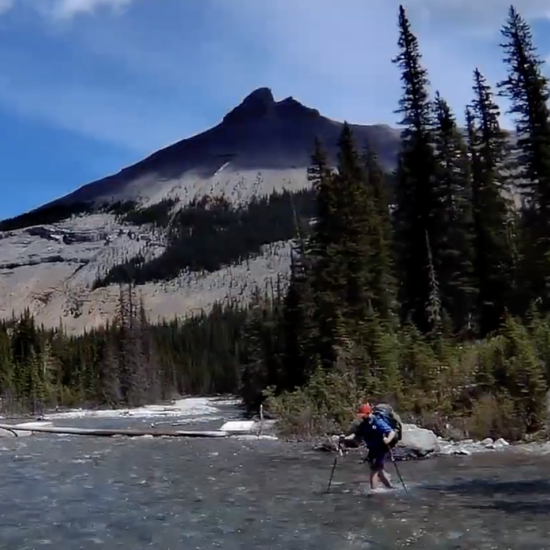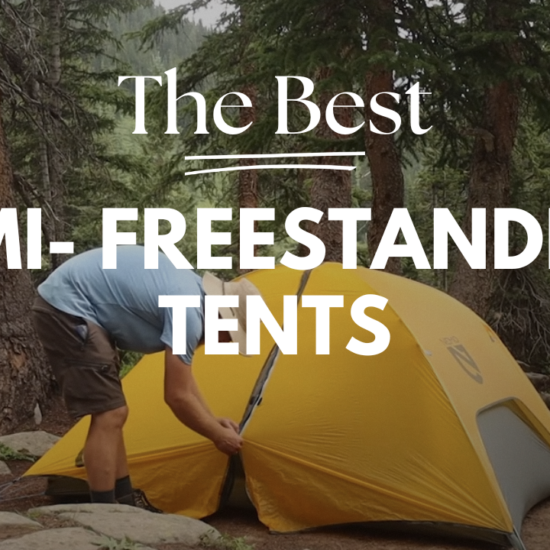
The Official MyLifeOutdoors Guide for Treating Water in the Backcountry
Water filters: if you’re new to backpacking, or even going on longer day hikes, choosing the right one for you can seem daunting. There’s a lot of risks involved in making sure you have the right system to filter your water: if you don’t do it right, it’s easy to get sick, and no one wants to cut a trip short because of water-borne illness. Now, there are many different ways to treat water: from boiling it to filtering it, using chemical treatment or even harnessing the power of UV light. In this blog, I’m giving you a quick breakdown of the pros and cons of each method, so you can make an informed choice when you decide which one to go with.
1. Boiling Water
Pros: it’s easy to do this with any backpacking setup. If you have a means to build a fire or have a stove with you, then you have the ability to boil water.
Cons: boiling water kills water-born illnesses, but doesn’t filter out any solid particles if you’re having to drink from a muddy or questionable water source. It’s time consuming, and can use a lot of fuel.
2. Chemical Treatment
Pros: this is an easier method of treating water than you probably realize. You can chemically treat water with chlorine drops, iodine solution, tablets, or crystals. This method kills bacteria, viruses, and protozoa, except Cryptosporidium. It’s a lightweight and affordable way to treat water, and in the case of chlorine drops, you can even find what you need to use this method at home.
Cons: you have to wait 20-30 minutes before drinking your treated water. This method will likely leave a strong aftertaste that most people don’t like, and you do have to be very careful to make sure you don’t leave any untreated water on the threads of your water bottle when you transfer it–even one drop of untreated water can get you sick.
3. Physical Filtering
Pros: Physical water filters, like the Sawyer and Katadyn products, remove protozoa and bacteria such as Giardia. The carbon in these types of filters can remove bad tastes, and iodine-coated screens add protection against viruses that make it past the layers of physical filtration.
Cons: Typically, these filters are more expensive, heavier than other methods, and you have to clean or replace components of the filters after you’ve processed a certain number of gallons.
4. Ultraviolet Treatment
Pros: This system of filtering looks like a small, lightweight flashlight that you swish around in the water for a minute to kill bacteria, viruses, and protozoa. It’s essentially foolproof and lightweight, doesn’t leave an aftertaste and doesn’t involve replacing or cleaning worn-out filter parts.
Cons: You will need to carry additional batteries with you, and it doesn’t filter our solid particulates in the water.
These are the Best Products for Treating Water: For Every Method
Boiling water is probably the most inefficient way of filtering water, but you can speed up the process with the right stove. The MSR Pocket Rocket is my all-time favorite stove, but you can also check out other types of stoves by watching the video below:
Chemical Water Treatment

These are my favorite iodine tablets. One small bottle includes 50 tablets. Two tablets treat 1 quart of water, so make sure you use the right amount of tablets for the water you’re about to treat.
Another way to treat water is to use household bleach. Yes, really. Only use regular, unscented household chlorine bleach. The label will indicate if it contains 6 or 8.25% of sodium hypochlorite, which is the number you need to pay attention to for filtering water.
Use the table below to quickly determine how many drops you’ll need to use to purify your water:
| Amount of water | 6% solution | 8.25% solution |
|---|---|---|
| 1 liter | 2 drops | 2 drops |
| 1 gallon | 8 drops | 6 drops |
The Best Products for Filtering Water
The Sawyer Squeeze
This is the quintessential ultralight water filter setup at just 3 ounces, and, after purchasing your filter, it’s also pretty cost-effective for a long time, as the only parts you’ll regularly need to replace are the bottles you use to collect your water.
The most commonly-used bottles for this filter are Smartwater bottles, which you can find at any gas station on your way to the trailhead. They have the same thread depth as the Sawyer filter, so you can thread the filter directly onto a bottle and filter water without any mess or worry about contamination.
This is the system that I use, because it’s rare to find a system that truly is the best of both worlds: affordable and lightweight.
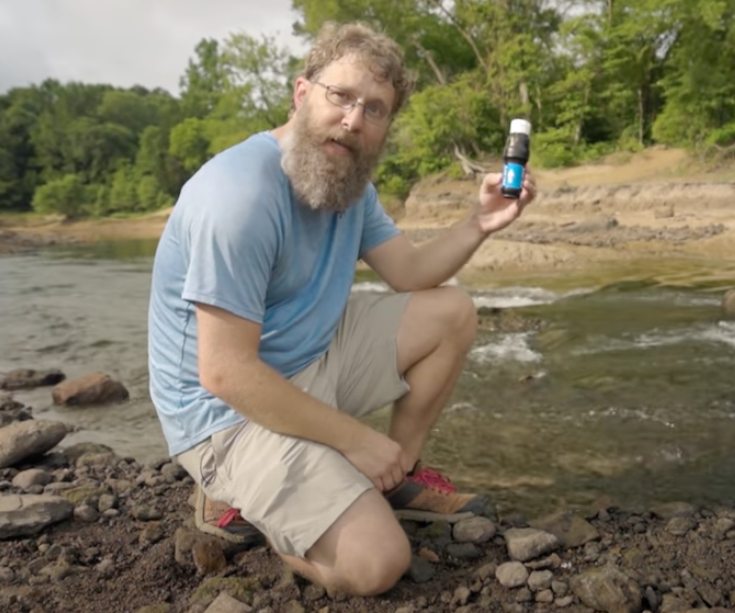
The Katadyn BeFree
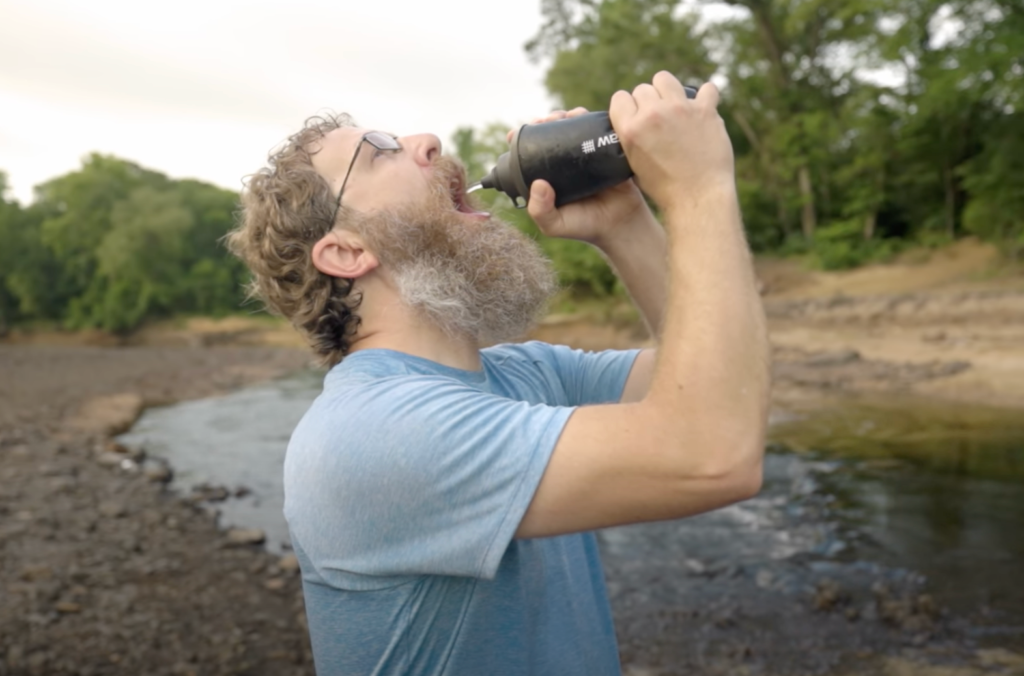
The Katadyn BeFree is the runner-up to Smartwater filters. At only 2.3 ounces for both the filter and the included bottle, it’s very lightweight. The flow rate on these filters is insane at 2 liters of water per minute, but unlike the Sawyer filter, you will have to replace the Katadyn filter cartridges after 750 liters. If you live in an arid climate where you’re filtering water often, you’ll need to replace this fairly often.
That being said, this filter comes with a lightweight, collapsible 1-liter water bottle that you can easily fill up at water sources. As you drink from it, it collapses down, making it easy to transport.
Ultraviolet Treatment
The Steripen, also made by Katadyn, is the most trusted UV water purifier on the market. This new release of an old product is actually rechargeable, which negates the need to carry extra batteries. Just recharge it with your portable battery pack and stir away to make potable water.
With the integrated battery, it weighs in at 4.94 ounces.
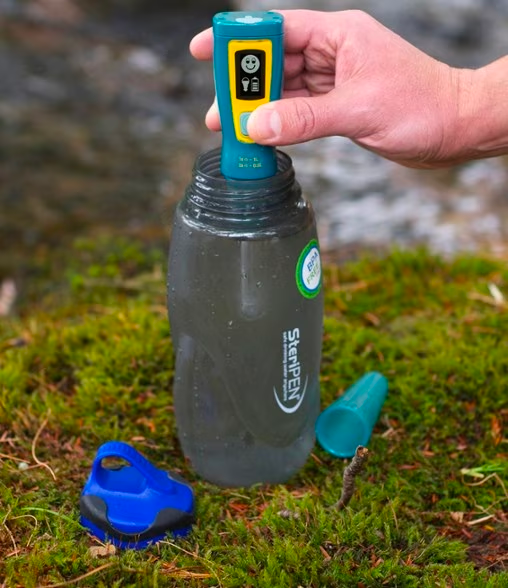
The Best Method Overall?
Choosing the right water filtration method depends on your specific needs and preferences. If an affordable setup without the need for replacement filters is important to you, the Sawyer filter with SmartWater bottles might be your best bet. If you’re a fast hiker that doesn’t want to hang out at water sources for too long, the Katadyn will be the clear winner for you since its flow rate is unmatched. If an ultralight setup is the number one priority for you, iodine tablets or a little dropper bottle of chlorine will set you up for success.
If you want to see me compare even more ways to filter water, just watch this video:



